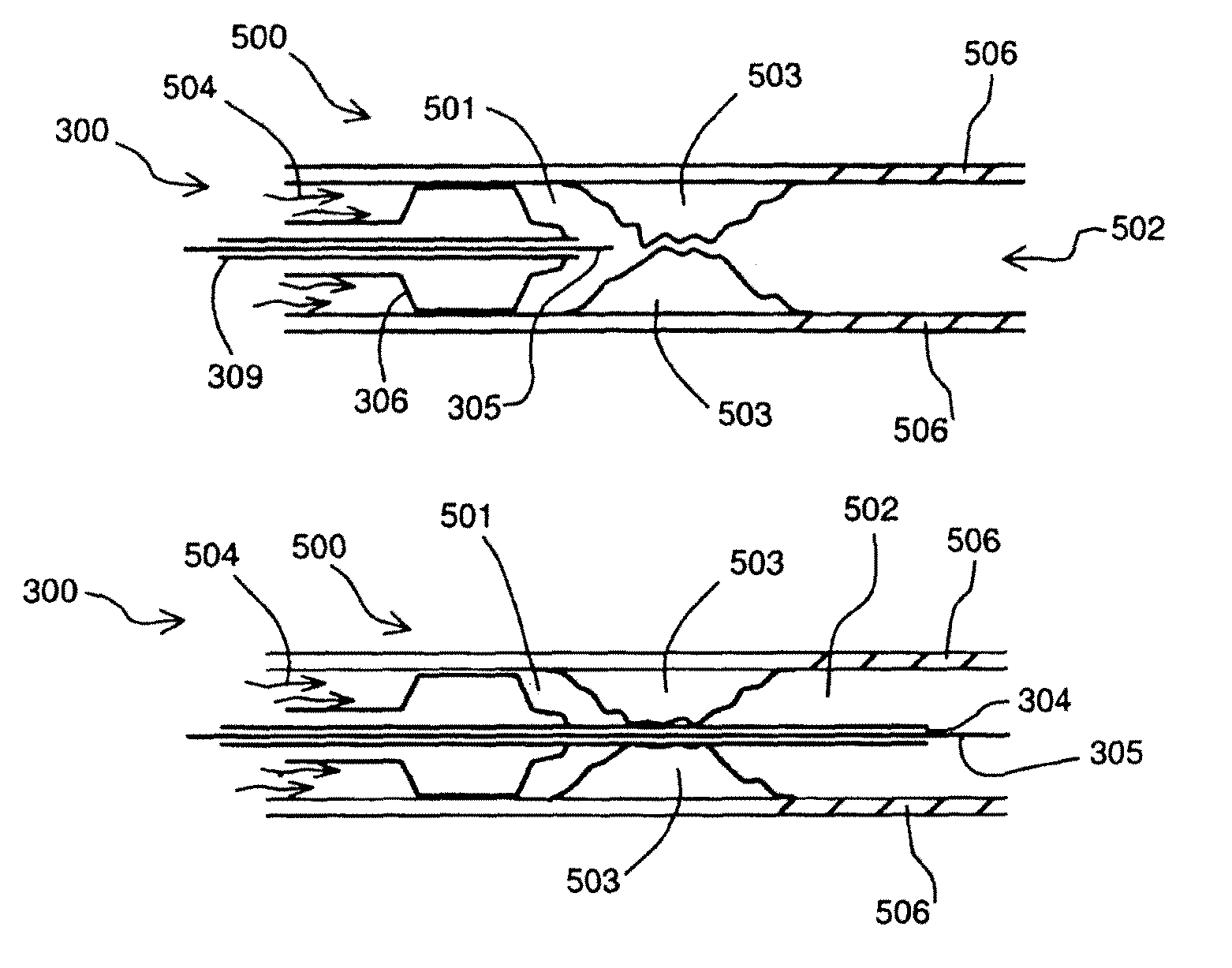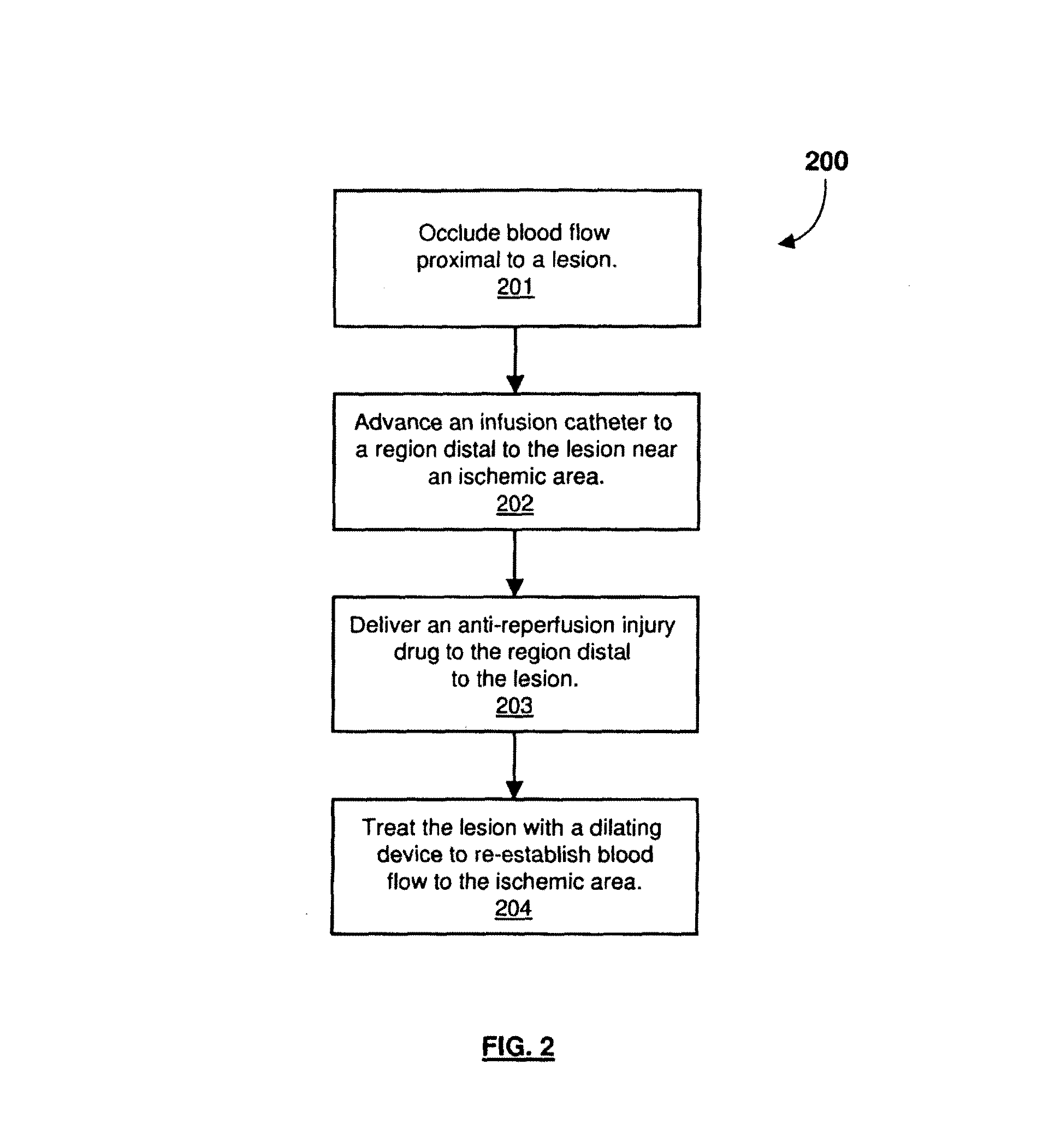Apparatus to prevent reperfusion injury
a technology of appendix and stent, applied in the field of appendix to prevent reperfusion injury, can solve the problems of unfavorable outcome, failure to salvage myocardium, and insufficient oxygen-rich blood for the heart, and achieve the effect of preventing the injury of the sten
- Summary
- Abstract
- Description
- Claims
- Application Information
AI Technical Summary
Benefits of technology
Problems solved by technology
Method used
Image
Examples
Embodiment Construction
[0041]In the following description, numerous specific details are set forth such as examples of specific materials or components in order to provide a thorough understanding of the present disclosure. It will be apparent, however, to one skilled in the art that these specific details need not be employed to practice the disclosure. In other instances, well known components or methods have not been described in detail in order to avoid unnecessarily obscuring the present disclosure. Embodiments of a medical device discussed below are described with respect to the treatment of cardiac ischemia caused by the blockage of blood flow from lesions within an arterial vessel. It may be appreciated, however, that other blood vessels or channels in the body may be treated, and embodiments of the medical device are not limited in their applicability to treat coronary arteries.
[0042]Embodiments of a medical device and methods for preventing reperfusion injury are described. FIGS. 1A-1C and the b...
PUM
 Login to View More
Login to View More Abstract
Description
Claims
Application Information
 Login to View More
Login to View More - R&D
- Intellectual Property
- Life Sciences
- Materials
- Tech Scout
- Unparalleled Data Quality
- Higher Quality Content
- 60% Fewer Hallucinations
Browse by: Latest US Patents, China's latest patents, Technical Efficacy Thesaurus, Application Domain, Technology Topic, Popular Technical Reports.
© 2025 PatSnap. All rights reserved.Legal|Privacy policy|Modern Slavery Act Transparency Statement|Sitemap|About US| Contact US: help@patsnap.com



